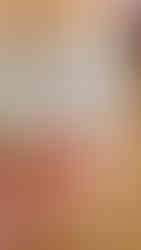What Knitting Needle Should You Use?
- learntoknitonline
- Mar 31, 2021
- 3 min read
Updated: Apr 6, 2021

The question I get asked the most from beginner knitters is what needle size should they get for the yarn they have...or vice versa. I am delighted to tell you this is generally an easy one to answer.
The label on your yarn is packed full of information, some of which I will cover in another post/vlog but nine times out of ten, this includes the recommended needle size for the yarn in your hands. And yes recommended is in italics because that needs elaborating on for reasons that will become clear in my follow up post...but first let's answer the question.
Here are some examples of yarn labels, where you can find the different ways the recommended needle size is stated.
Let's take the first label on the left to start. Those little needles crossed over are the icon on this label indicating needle size. Underneath it you can see it says 3 1/4 mm aka 3.25 millimetres and next to it it has the US version (as UK, EU and US have different metric systems for knitting needle measurements). So the US size is 3...same needle just labelled differently. This also means that should you have a yarn that only states the mm measurement, you can now ask Google for the US equivalent and vice versa.
Now let's take the middle label example. The way it presents the needle recommendations is sectioned with a headline, 'Needle/Hook'. This is referring to the Knitting Needle size and the Crochet Hook size recommended for this yarn. In this case it is a 9mm. This applies to both a Knitting Needle and Crochet Hook. The US equivalent, in parentheses, is a Knitting Needle size 13 and as they have a different Crochet Hook system, the Hook is an M-13.
Finally on the right we have the recommended needle size presented as 'Suggested Needles' and in this case the US size is first, US -5-6 and the UK/EU equivalent is 3.75mm - 4mm.
Now as you can see this one suggests 2 potential knitting needle sizes and that is so you can either, decide which you like better depending on your personal knitting gauge (are you generally a tight, loose or medium knitter?) or if you actually only have a 3.75mm to hand (pun intended), the small range it offers you here is to reassure you that there's not a lot of difference in it. If you have a 3.75mm and would need to buy a 4mm, then it may not be worth the hassle...although I would always encourage you to have a 4mm as it is arguably one of the most commonly recommended needles for many projects and patterns.

If your label doesn't state a recommended needle size, I highly recommend online communities and free knitting databases like Ravelry. You can type the brand and type of yarn from the label in and see it's official listing along with suggested needle sizes...plus all the things Ravelry members have knitted with it.
If you don't have a label, can you compare it to other similar thickness yarns that do or...experiment! Try out some different size needles and see what they produce. Remember the only 'wrong' knitting is the knitting that is not producing the results you want.
I cover all of this and a lot more on Lesson One of my Beginner Knitting course, you can find the single 45 min chaptered video version here.
But first, come with me to my follow up post where I clarify what that term 'recommended' knitting needle size means and what the consequences to consider are...
To be kept up to date with my new knitting classes, tips and tricks sign up to my newsletter, The Loop





